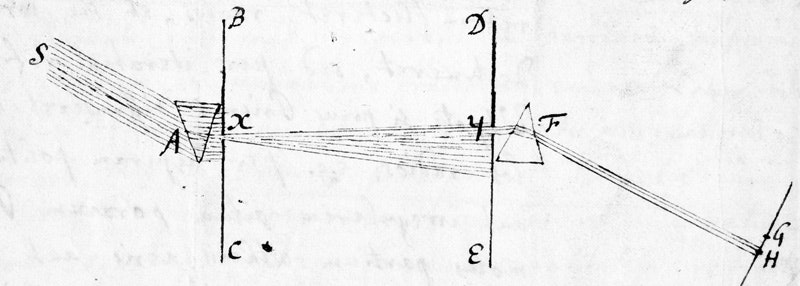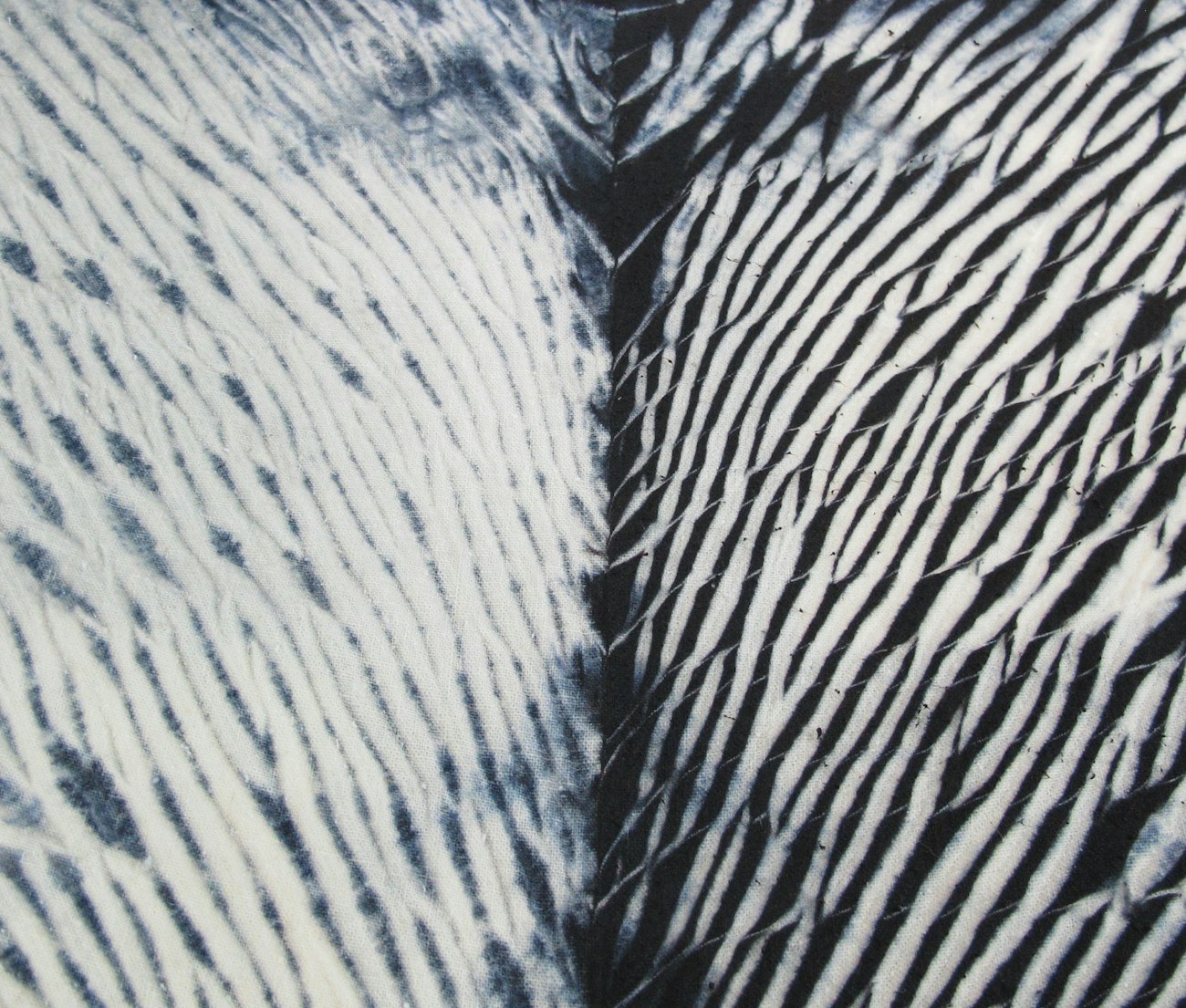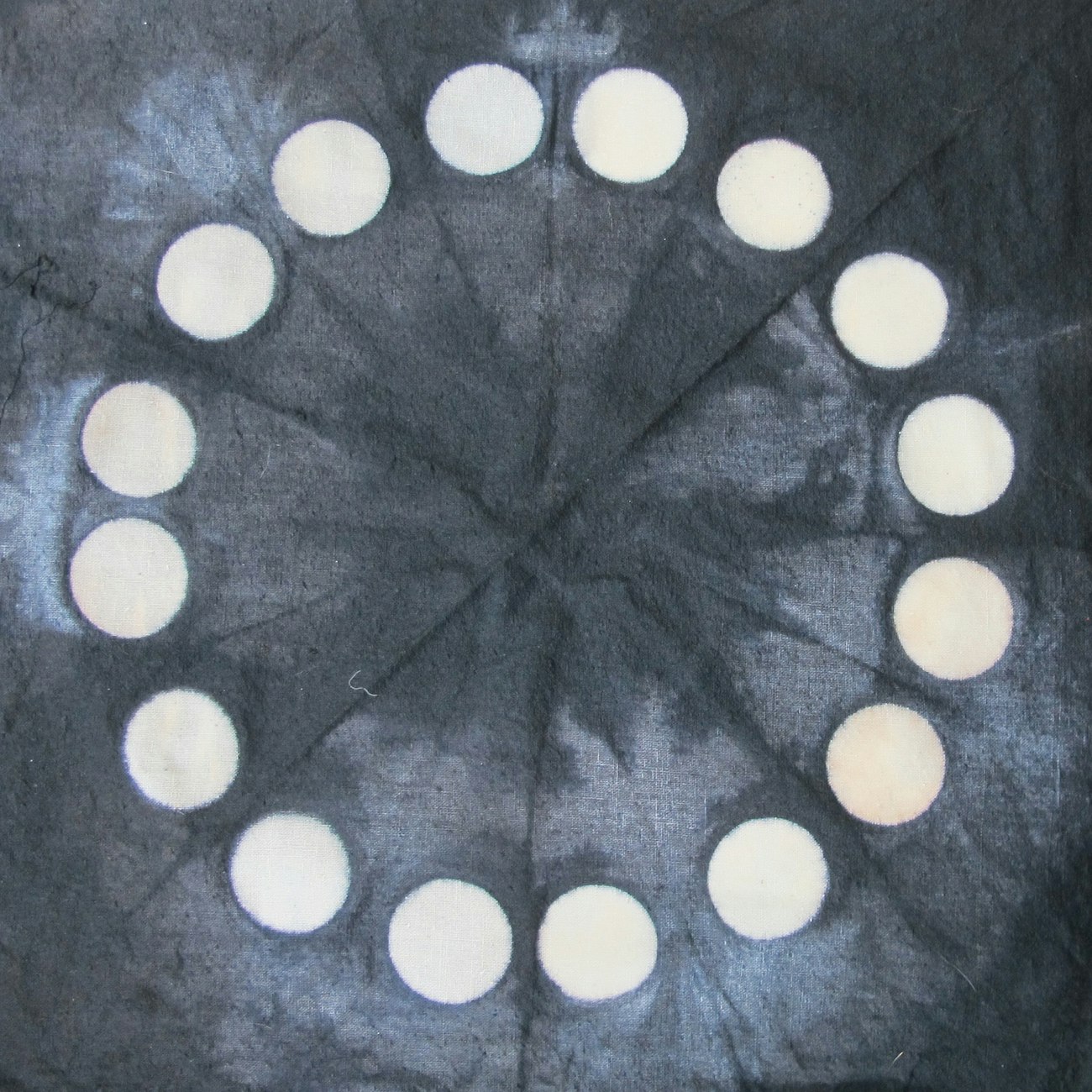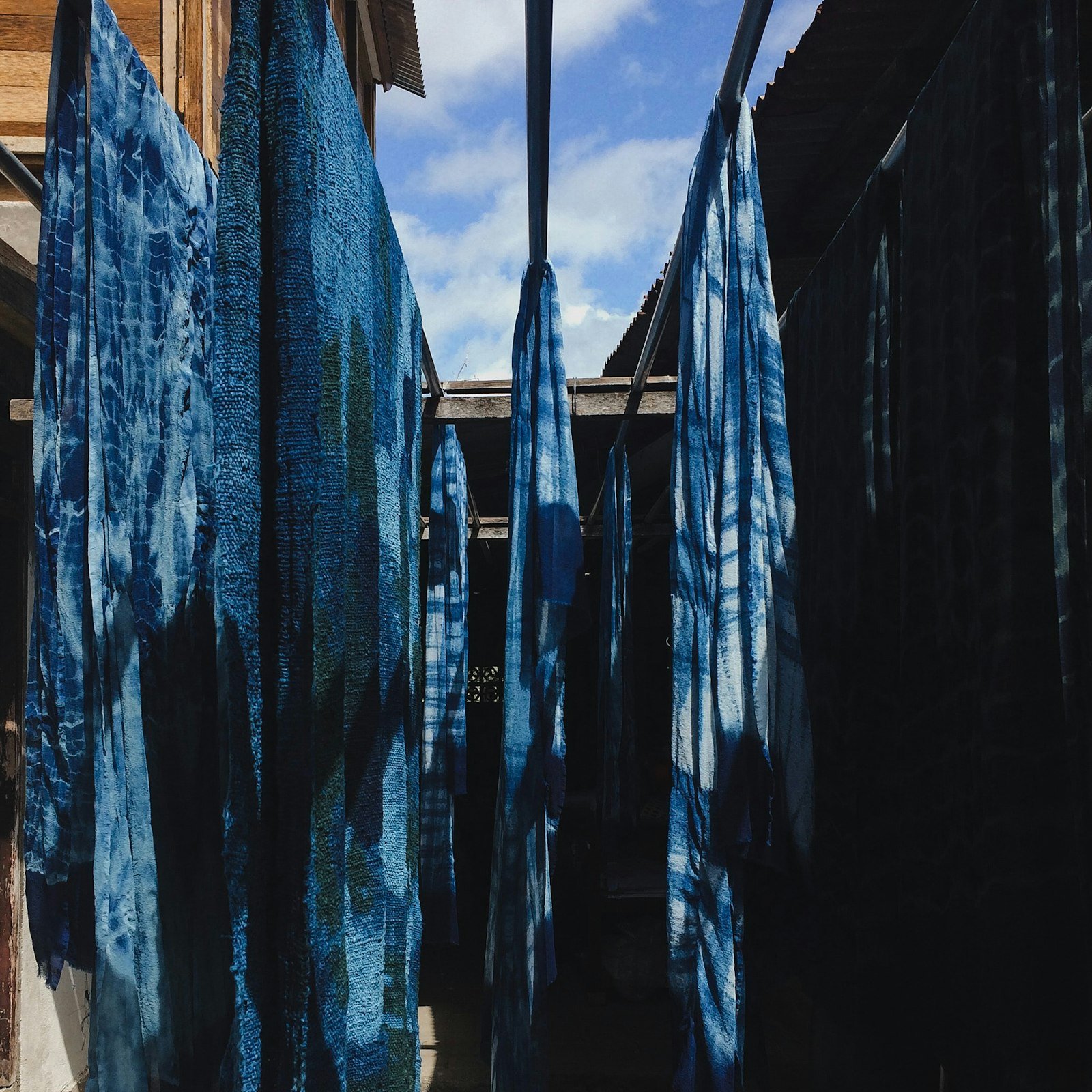Indigo is probably the most famous of all natural dyes, and is certainly the most widely used today. What is indigo? The dye is extracted from the leaves of plants in the genus Indigofera, which grow in tropical climates. The leaves are transformed by farmers into a blue extract that is sold to dyers who prepare dye vats with the addition of an alkali (such as lye or lime) and a reducing agent (either chemical like thiourea dioxide or natural such as fructose in powdered form or as the syrup from certain fruits.)
In the past, balls of dried Indigofera leaves were available in some West African countries such as Mali and Senegal to be used by local dyers. In Europe before the 19th C., the preparation of indigo balls was done by growers using the indigenous woad plant (Isatis tinctoria.) During the 19th century, the old fashioned use of balls was gradually abandoned and replaced by the blue extract, called indigo. Today very few people are involved in the use of Indigofera balls: Among them are Dogon people in Mali and artists such as American Rowland Ricketts who prepares a compost from Persicaria tinctoria which grows in a temperate climate, reviving an old Japanese method of composting the plant material and using it for dye.

Indigo vats ready for dyeing in Japan. Photo by Susan E. Horton
The notoriety of indigo goes back thousands of years, particularly in India, the oldest center of indigo dyeing. India was the primary source of indigo in the Greco-Roman era, though other Asian countries like China and Japan had also utilized indigo for centuries. It became an incredibly valuable resource in Europe through the Middle Ages, becoming only slightly less rare as trade routes opened up throughout the Renaissance. Demand for the dye fueled trade wars, propelled the slave trade, and partially financed the American Revolutionary War.
Indigo's Impact on Science
Indigo fever even had an impact on science and physics that lasts to this day! In the mid 17th century, Sir Isaac Newton was proving that white light comprised a full spectrum of colors. He demonstrated that light could be divided by use of a prism, then reunited with another prism.

Illustration of Newton's dual prism experiment, from his 1671 letter to the Royal Society.
He divided the indistinct continuum of color into seven distinct, visible colors: red, orange, yellow, green, blue, indigo, and violet. So what is indigo doing in the color wheel? Newton's distinctions and color names were somewhat arbitrary, as is the nature of color in general. Indigo was a major commodity at the time, and it would have been recognizable to Newton's contemporaries.
The way you see color depends upon the context, your culture, and the language you have to talk about color. The only reason we see a rainbow made up of bands of color at all is because human perception prefers to organize stimuli into distinct “buckets” rather than dealing with a spectrum. It’s a shortcut your brain takes so it doesn’t have to work as hard.
Newton decided to divide the rainbow into seven colors because he believed seven was a cosmically significant, even “magic” number. The musical scale has seven notes, and Newton decided to define seven distinct colors as well.
Modern Color Wheel Controversy: What Is Indigo Doing In There?
Today, many color specialists advocate for removing indigo from the colors of the rainbow. They want to define it as: red, orange, yellow, green, blue, purple. Today, the color “indigo” refers to a blue-purple color that many people can’t actually distinguish from blue or purple. Experts say that Newton only put indigo in the rainbow because he wanted seven colors, and indigo was an extremely valuable commodity at the time.
But many believe that what Newton called “blue” was closer to the modern “aqua,” a mix between blue and green, and that his “indigo” was what we’d call “blue” today. This makes sense if you consider the actual color of indigo dye cakes. They are really not very purple at all. In which case, it’s not his decision to define seven colors that’s the problem—it’s the naming conventions that are the issue.
In today’s world where most blue dye is synthetic, calling blue “indigo” doesn’t make a lot of sense. It's especially difficult to teach to children, who may be wondering, "What is indigo?" It might make more sense to change the rainbow to a more modern version, still with seven colors: red, orange, yellow, green, aqua, blue, purple!
Learn How to Create Patterns in an Indigo Dyepot

Arashi shibori from "Natural Shibori: Arashi"
There are many methods of creating pattern on cloth with indigo dyeing. Some such as ikat and woven shibori happen before or as the cloth is being woven, and others such as batik, arashi shibori, and itajime shibori are done on the actual cloth. All of the methods use a resist of some sort whether it's wax as in batik, pole wrapping as in arashi, or tying off sections of yarn to prevent the dye from penetrating as in ikat. If you are interested in trying your hand at arashi, check out this video "Natural Shibori: Arashi" by Elizabeth McTear.
If you are interested in woven shibori, "Weaving Cloth for Shibori: for Four Shafts or Fewer" On Demand Web Seminar with indigo, with Catharine Ellis will be helpful to you.

Itajime Shibori from "Natural Shibori: Itajime" with Elizabeth McTear.
And if you are eager to try itajime shibori, which involves folding and clamping the cloth to form patterns of resist, check out this other video by Elizabeth McTear, Natural Shibori: Itajime
Whatever method you decide to try, you'll find indigo an intriguing color whether it's on the color wheel or not!
Published August 26, 2016 Revised April 26, 2022 Revised again on May 13, 2022

